
This is the first in a series of articles to help you decide what methods and styles of travel work well for you. Today, I will discuss some considerations regarding long-term travel. And I will share some reasons why I like to travel this way.
Maybe you feel that the two-to-three weeks of vacation time you get every year is just not enough. I used to say, “Gosh, if I’m going to go to the trouble and expense to travel that far, I want to stay a while!”
How I Got Carried Away…
Post Contents
My recent two-year journey was originally planned as a six-week trip to Spain to walk the Camino de Santiago. Then, I thought that as long as I was in Europe, I might as well go to some other places. By the time I left the US, I had plans for a six-to-eight- month trip to Spain, the UK, Ireland, and Northern Europe. Then, before I knew it, I had been wandering around Europe for thirteen months and was ready to embark from Estonia to Kyrgyzstan.
That trip got a little out of control. But it worked because I was fortunate enough to not have anything back in the United States pressing me to return.
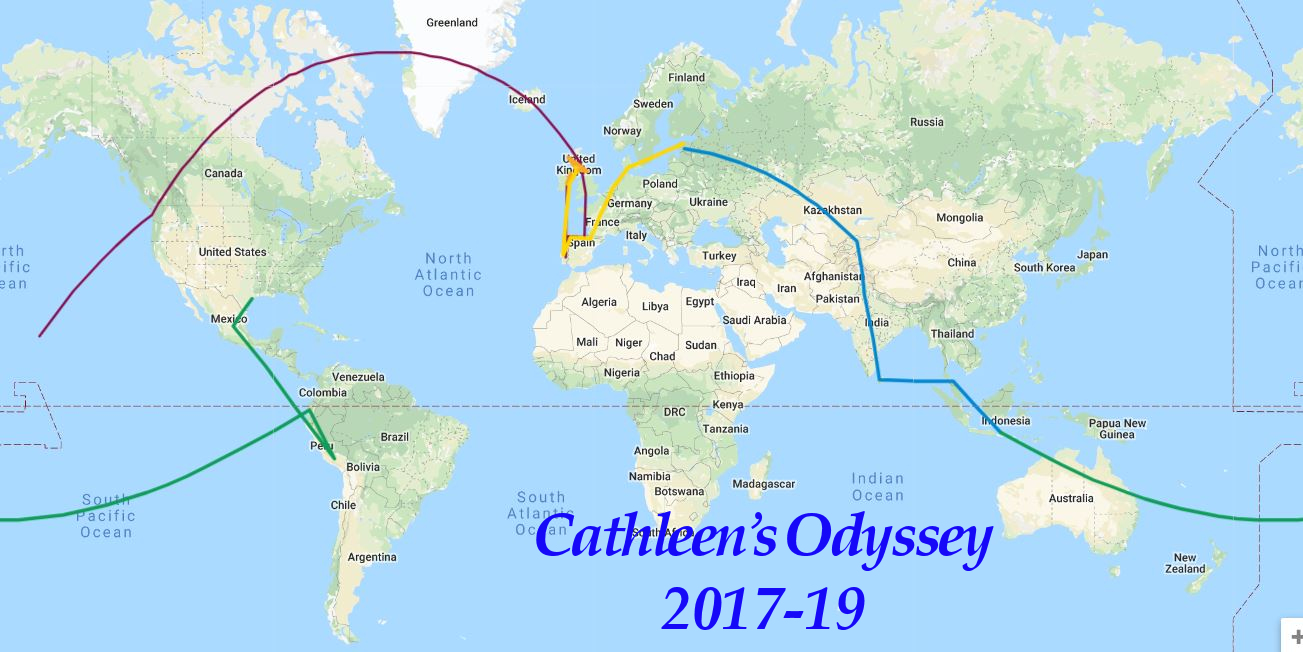
Obviously, it turned out that I enjoyed the traveling lifestyle. It gave me the luxury of traveling slowly, staying put in each place for a while and absorbing the atmosphere and culture. It provided an easy way to make new friends from all over the world. After a while, I realized that I had established a new lifestyle for myself.
I learned how to enjoy the little things…like buying a pastry from a street vendor and chatting with him about the ingredients…or just walking through the crowded streets or empty woodlands and allowing the “pinch myself” feelings to overwhelm me. “Look where I am and what I am doing!” I would exclaim every once in a while.
I have created two worksheets to help you decide if long-term travel is for you, and to help you get ready for your trip.
- Long-Term Travel Worksheet
- Getting Ready to Travel Checklist
You can download them for free:
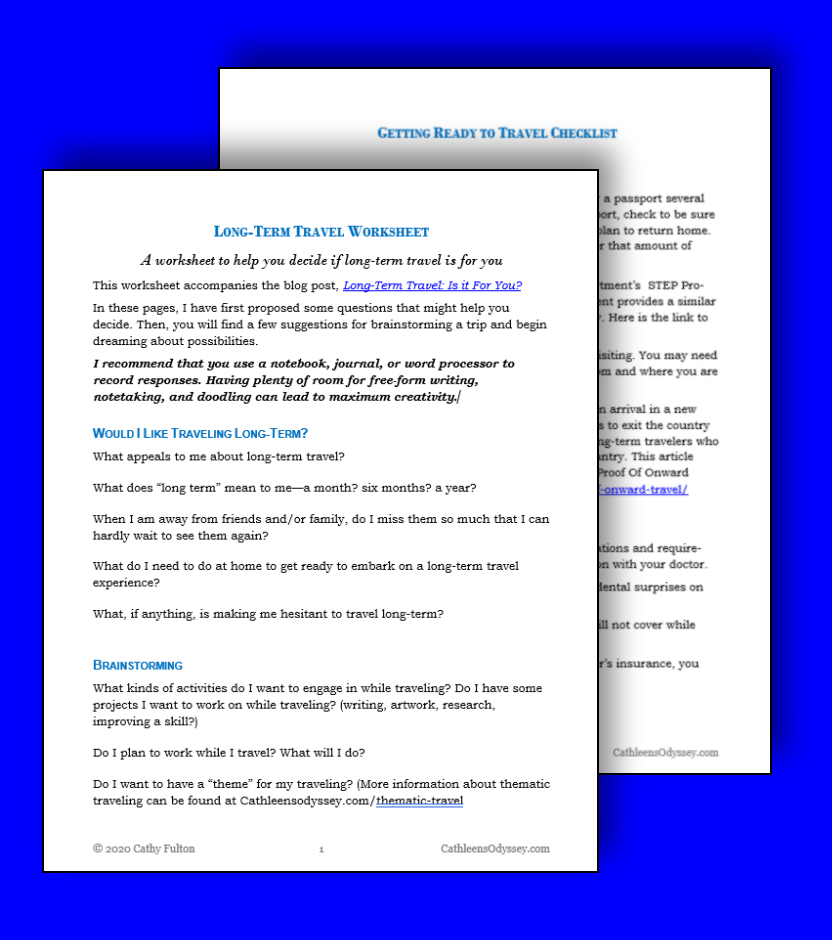
How Can I Afford to Travel Long Term?
Of course, cost is the first thing that comes to mind for most of us. Here are a few things that will help save money.
- Choose affordable destinations. In many countries, your funds will stretch much further than in the United States or Europe. So, you don’t have to be able to make a great deal of money to afford to travel. I have lived several places where my monthly expenses never exceeded $1000 USD. (India, Kyrgyzstan, Sri Lanka, Malaysia, Indonesia, Ecuador.)
- Look for lodging discounts. When I am staying in a guesthouse for a week or longer, I look for discounts. Even if a discount rate is not listed in a booking site, it is worth sending a private message to the host and ask if they have a discount for weekly or monthly rentals.
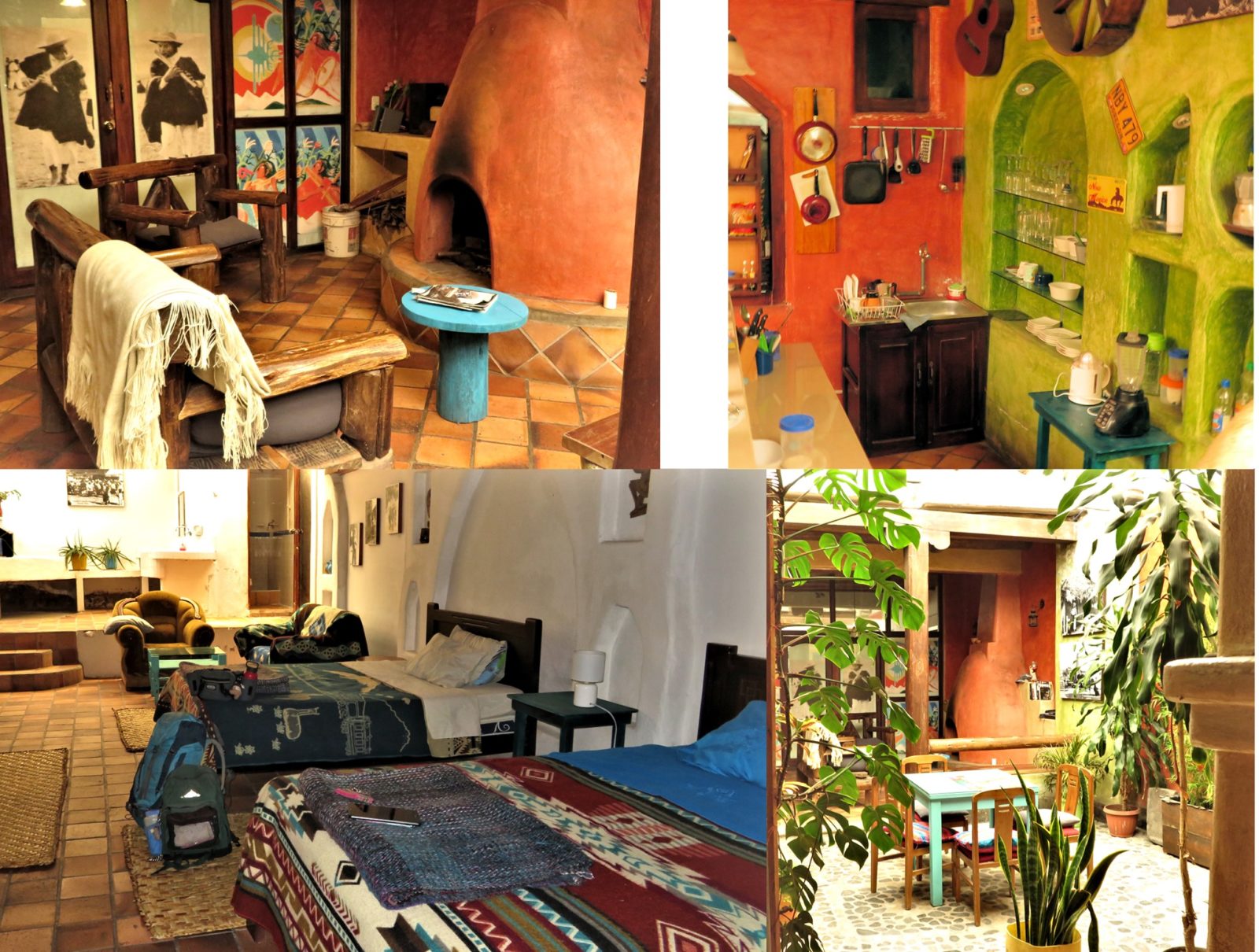
By asking my host about monthly discounts in advance, I paid less than $300 USD/month for this cozy guesthouse in Otavalo, Ecuador.
- Prepare most of your own meals. Eating in cafes and restaurants can make a serious dint in your budget.
Read my blog posts on Frugal Food Strategies here.
And I authored an e-book that you can access here.
- Learn how to use public transportation. It is amazing how much you can save by traveling like the locals.
Imagine my delight when I boarded this local bus in Sri Lanka and saw this “disco” version of Lakshmi, the Hindu goddess of wealth, fortune, and prosperity.
Avoid buying souvenirs. Collect memories, friends, experiences, and photos instead. Keep a journal. In 10 years it will be much more precious to you and your family than anything you buy in a gift shop.
- Embrace low-season travel. Yes, many sites are closed or have diminished hours. It can be cold (or very hot) in some locations. But you many find some deep discounts. I often received 20-25% off the already reduced low-season rate in hostels in Ireland and Scotland. I learned to watch the weather forecast and went out on hikes on the nice days and focused on indoor activities at other times.

I spent several weeks in March in this dorm room overlooking the bay in Oban, Scotland. Because it was low season, I had the room to myself many nights. The hostel featured a cozy living room and well-equipped kitchen. From here I could take many different day hikes or board a ferry to one of the western islands.
- Consider becoming a house sitter. There are now a wide range of opportunities for watching homes and pets worldwide. You often have the use of an entire home or apartment in a nice neighborhood just for helping out other travelers. One service to check out is Trusted House Sitters.
Take part in work exchange opportunities. Often for about 20 hours of work a week, you will be provided room and (sometimes) board. There can be other perks, like making lots of new friends and learning new skills. A couple websites to check are Workaway.info and Worldwide Opportunities on Organic Farms (Wwoof.net). You can also google, “travel work exchange” for more options as well as many blog posts about how this kind of travel works.

For 20 hours of work a week on this beautiful Hawaiian farm, we received lodging. And there was a quiet beach in walking distance.
- Work while traveling. When I first went to Peru for four months in 2014, I was able to work for my clients on-line. These days there are lots of opportunities for working remotely, but you may have to think creatively, depending on your skills. If you need to work while traveling long term, do some research and look outside the box.
If you already work in the high-tech field, you may be able to convert your current office job to a remote occupation. More and more employers are accepting this from their employees. Do some research on the Internet. Brainstorm ways that you could do your current job, or a closely related one, remotely. Create a formal presentation for your boss, and just ask. You might be surprised.
Travel bloggers GoatsOnTheRoad have published an informative post about working remotely, The Ultimate Guide to Working Remotely. It includes a section on how to pitch your remote working idea to your existing employer.
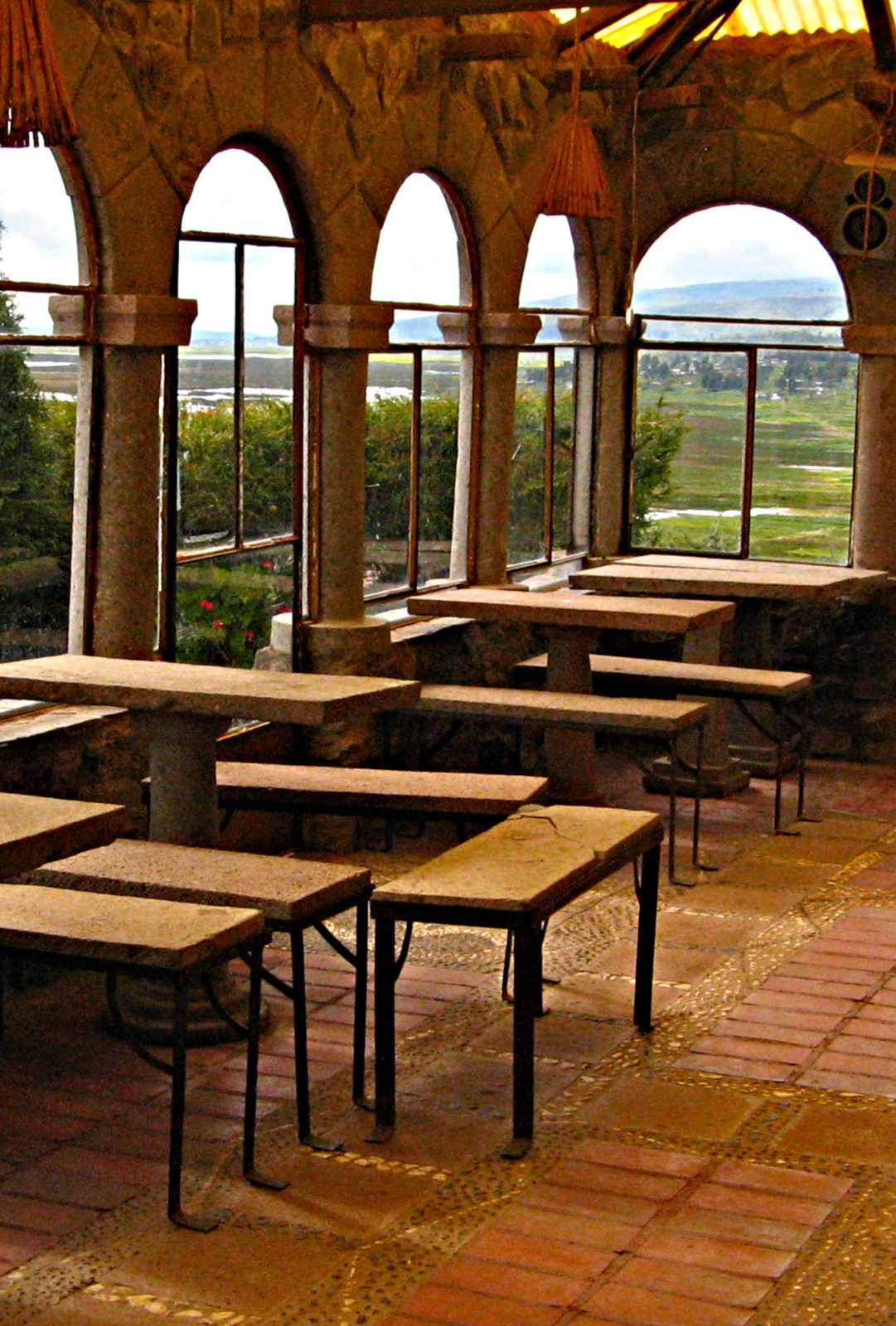
One of my many offices while traveling. Here I had a beautiful view of Lake Titicaca, Peru from this lovely solarium.
What about My House?
My solution was to sell my home and downsize so that all my possessions fit in the smallest rented storage unit (5x5x8 feet).
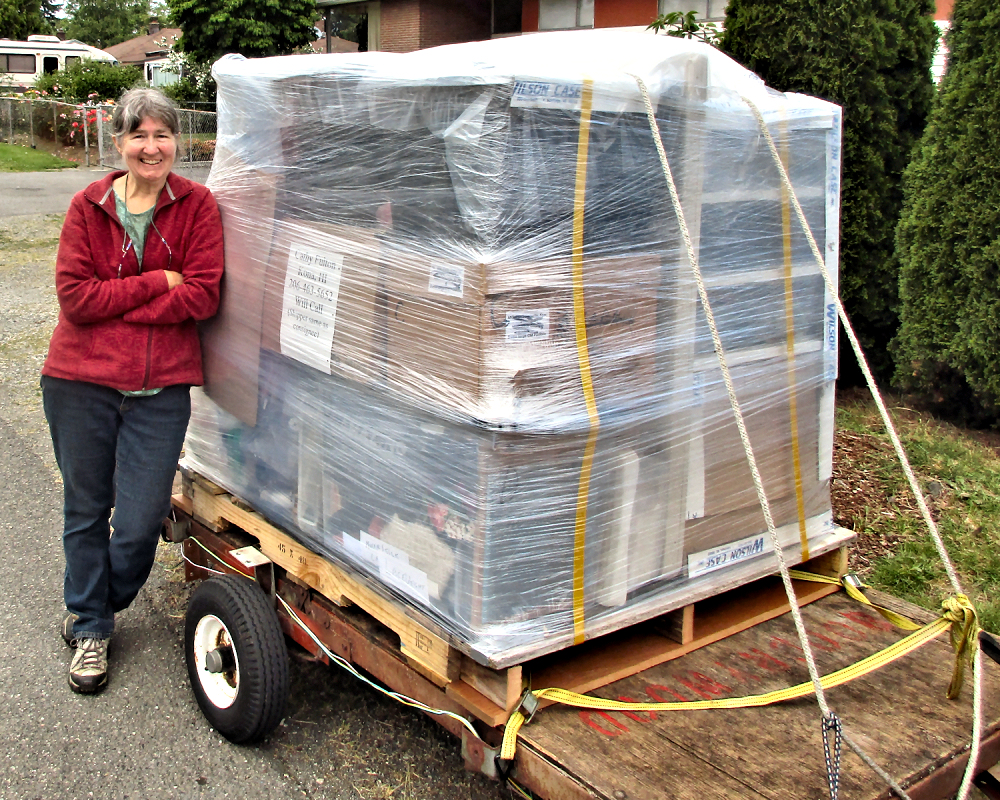
The last of my belongings fit on a 4×5 foot pallet that I shipped to Hawaii where I lived for a year. Then everything was transferred to the smallest storage unit available while I traveled.
I recognize that many people prefer to hold on to their homes. If you don’t want to sell your home, making arrangements for it can be more complicated. Managing the property remotely can be a problem. Some solutions include:
- Close it up. Google “make a house look lived in” for lots of creative ideas for making potential house-breakers think someone is home.
- Allow a trusted person to stay in it with free or reduced rent. But be sure you know the person really well.
- Utilize a housesitting service. (TrustedHousesitters.com is one of many on-line services.)
- Do a house swap (house exchange). There are lots of on-line services for this as well.
- Rent it out. If I were doing this, I would probably utilize a property management service to take care of everything for me. I would not want to have to deal with the nitty-gritty problems of home ownership that might arise while I am away.
What about Mail? Bills? My Car?
Mail collection and management. Try to sign up for paperless communication for as many accounts and services as possible. Then you will receive critical alerts and messages via email while you travel. (See the section below about a “personal assistant.”)
Paying bills. Go through all the recurring bills: mortgages, rent, storage spaces, insurance, loan payments, etc. Make sure they are automatically paid or that you receive them by email when they are due. Then make sure you know how to pay them online. Don’t forget those quarterly and annual bills.
Automobiles. They should not be left undriven for long periods of time. Here are some things to consider. Do you want to loan it out? have someone use it occasionally? sell it? You will need to maintain at least the minimum legal auto insurance on it if it will be driven. Check to see what the penalties are in your state if the registration lapses.
I took the easy way out and got rid of my car. When I returned to the US, I found that I was able to live for a while without one!
Designate a “Personal Assistant” at Home
Early in your planning, find a friend or relative whom you trust and is willing to take care of your “home” business. This may end up being several different people, depending on what kinds of business you want them to handle. Here are some things your assistant(s) can do for you:
- Receive items you send home and send items to you.
- Make deposits to your bank accounts when you receive hard-copy checks.
- Have access to your storage unit if you have one.
- Be an emergency contact.
- Take care of mail collection. This many mean they will open your mail, scan it, and send the contents to you electronically.
Make sure someone at home is a joint checking-account holder and has signature access to your bank account(s). Leave them some hard-copy checks. If something happens to you, they will be able to send money from your account to anyone you specify with ease.
Additional Suggestions
Don’t travel too long on your first trip. My first long-term trip was for 3½ months to Peru. That worked out for me. But I gave myself permission to return home if, at any time, I decided I was not enjoying the trip. If you have any misgivings, I recommend you try for three to six weeks for your first long-term trip.
Don’t try to move around every few days. Adopt the “slow travel” lifestyle, or you will most likely get burnt out quickly. Choose fewer locations and stay longer at each one. This has the advantage of saving money in transportation costs—especially by air. You may also receive nice discounts for lodging when you plan to stay a month or more. You can learn more about slow travel here.
Plan for down time. You are going to have some down-time when you travel for longer periods. I enjoyed having projects to work on—both travel-related and not travel related. If you want some ideas, be sure to check out my Thematic Traveling ideas here.
Purchase traveler’s insurance. Make sure that it will cover not only trip cancellations and your baggage, but also, more importantly, your medical care in case you are injured or become ill. Don’t leave home without it because your regular health insurance plan is not likely to cover you once you cross the border.
Here are two excellent resources to help you shop for travel insurance:
Best Travel Insurance Reviews for Seniors (those over 65)
Travel Insurance Guides and Reviews
Start Planning your next Long-Term Trip!
Download your long-term travel worksheet and checklist here:

I hope this article has not made long-term travel seem too daunting for you.
Even if you cannot take lengthy trips, I encourage you to step a little more outside your comfort zone each time you travel. This might mean you travel solo for the first time, or travel independently (without a guide), or to reach out more and engage locals. We will explore these other methods of travel in upcoming posts in this “Travel Styles” series.
Find many more travel tips in
Dream. Plan.Travel.
Your Guide to Independent Travel on a Budget
Other Blog Posts You May Find Interesting

Embracing Solo Travel
The main advantage of traveling alone is that you can decide where to go and how long to stay and you have all the say-so in your itinerary.
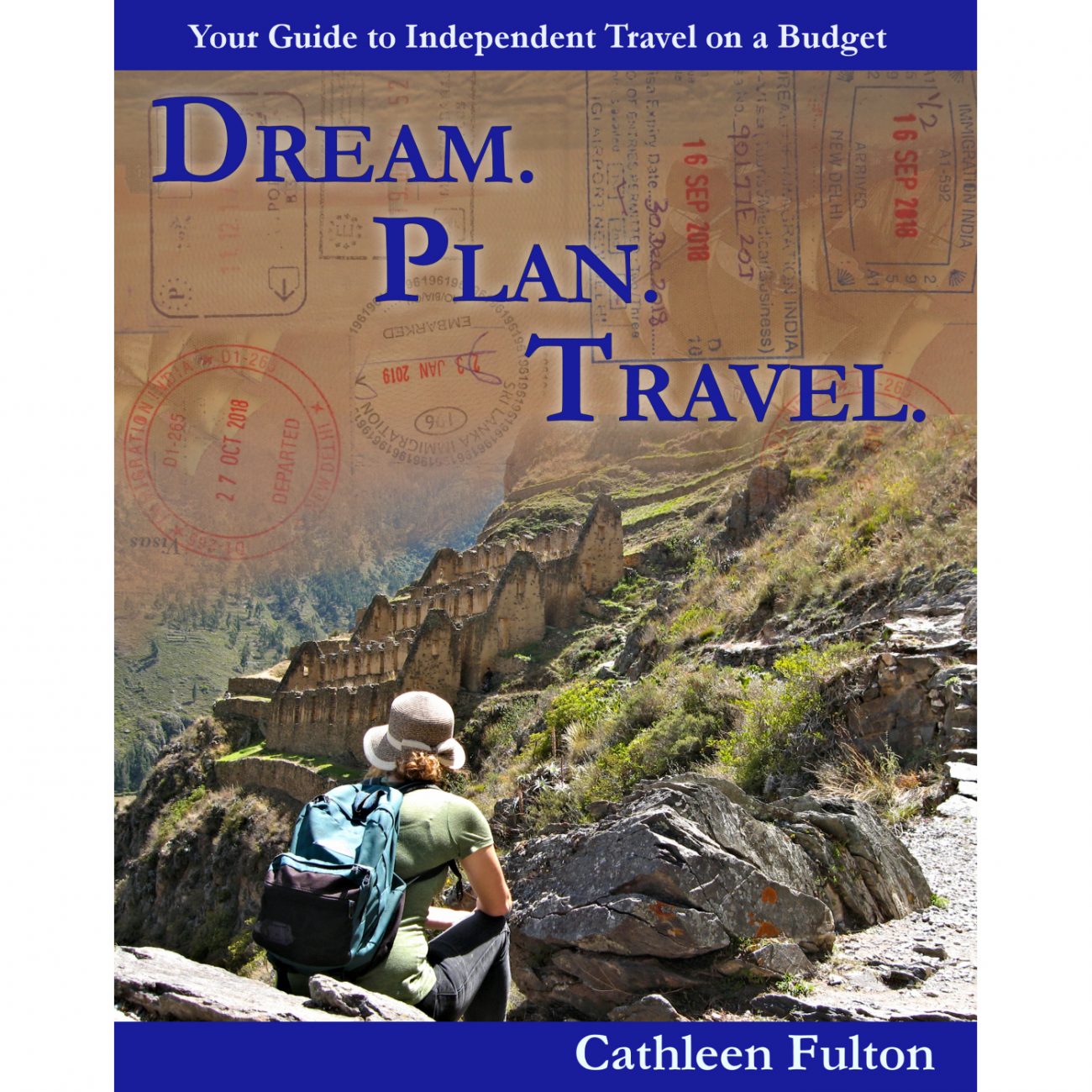
Introduction to My Book: Dream.Plan.Travel.
I envisioned a work that would show how I travel as well as inspire others to find the travel style and methods that work for them.

18 Ways I Save While Traveling
I spent 13 months in Europe during 2017-18 for less than $1,300 USD per month using the tips in this post.

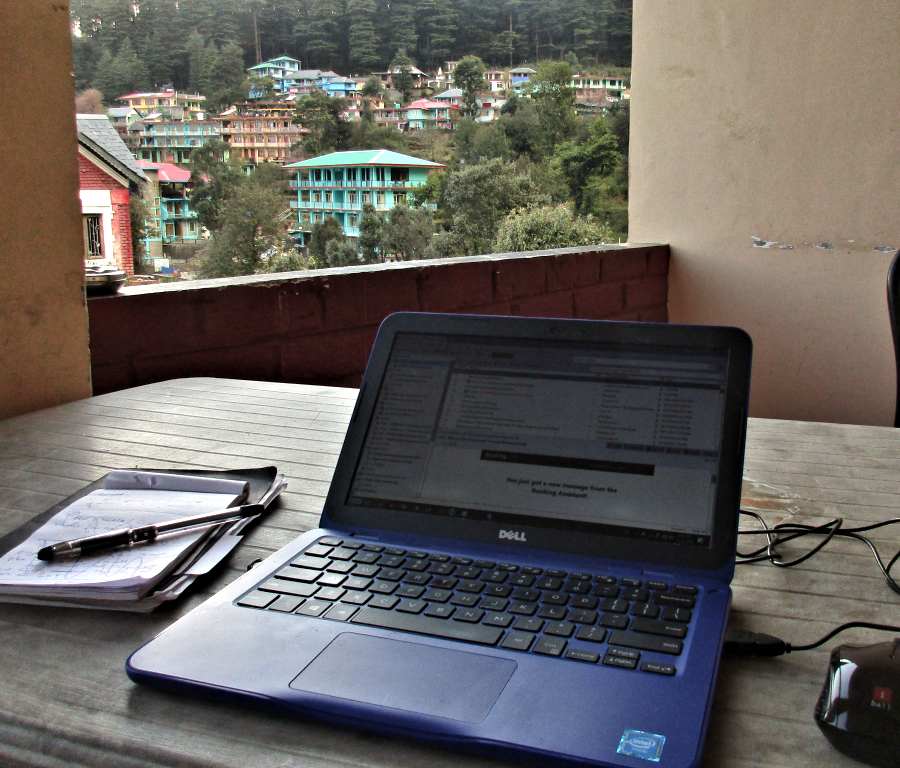
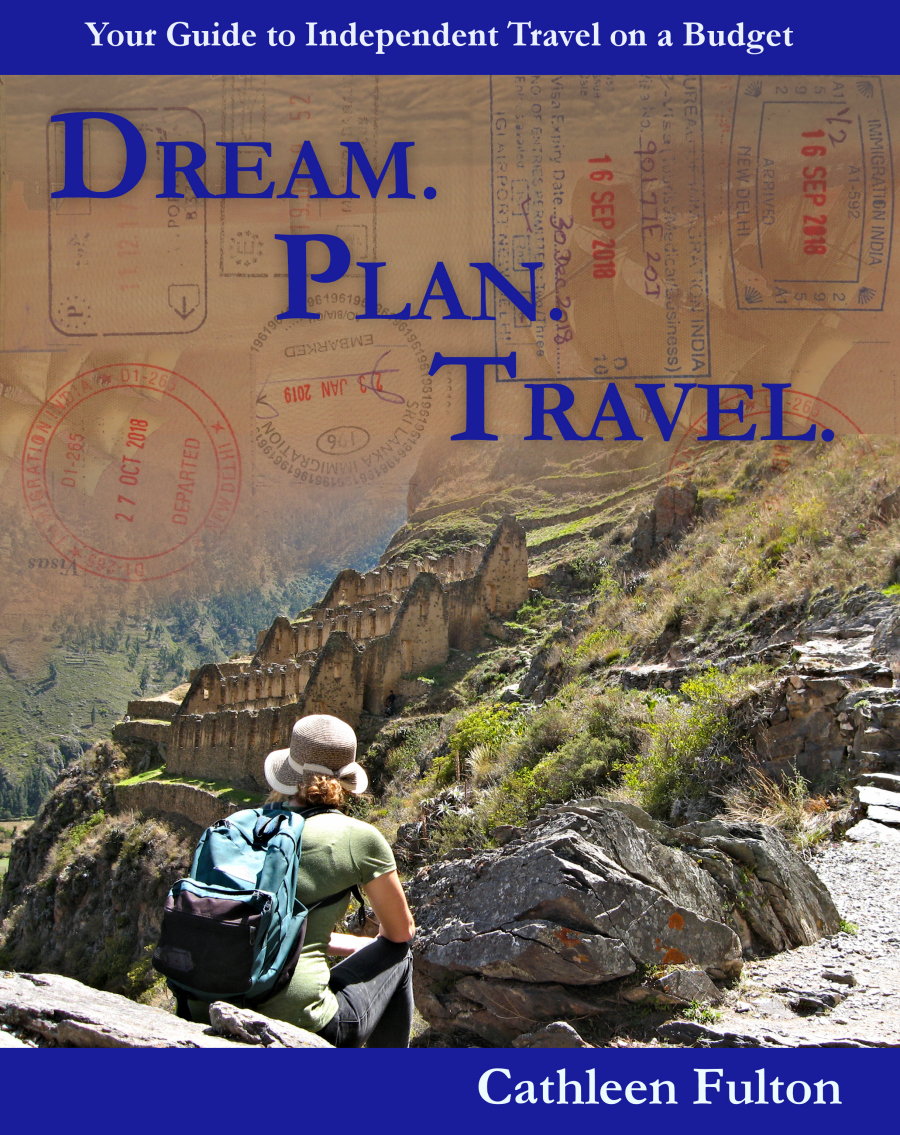
2 thoughts on “Is Long-Term Travel for You?”
Hello Cathy,
You have so much information for those of us that are thinking of solo travel.
You may have covered my questions in one of your posts (I haven’t read them all yet), but I would be interested in knowing how you time your travel itinerary around ‘length of stay’ visa requirements.
-Are you required to return to the U.S. at specific intervals for any required passport/visa requirements? Do you apply for extended visas? Can you tell me a bit about that process?
-How difficult is it for you to keep track of how long you can stay in certain areas in regard to their visa restrictions?
DiAnn
Excellent questions, DiAnn!
I encourage you to read my series that I call “Look Over My Shoulder.” In part 5 I talk about how I gather and organize logistical information, like visas, currency, language, etc.
For visa information, I start with our US State Dept. pages for travel. You can enter any country and see what the requirements are for US Citizens going to that country. (If you are not a US citizens, check to see if your country has its own versions of this.) Then I take this one more step and go to the website of the country I intend to visit to be sure the information in the State Dept’s. website is up-to-date. Most countries that do not grant visa-on-arrival, now use e-visas and their site will point you to their visa application page.
It is important to read all the requirements and limitations for visas. It varies from country to country. Sometimes I have been able to extend my visa while in the country (Sri Lanka). Sometimes the visa extension process was just too much trouble (or expensive) so I make plans to leave (Indonesia). Sometimes, all you need to do is make a “border run,” but I would never count on this as an option. (If I did a border run, I would not leave any possessions in the country I plan to return to, and I would have a plan about what to do in case I was not allowed re-entry.)
My itineraries are always pretty loose. I usually don’t try to plan the whole thing down to dates to move on more than a month or two out. This allows me flexibility to change my mind.
You don’t have to return to the US for passport requirements. You should always have at least 6 months (past the day you plan to leave a country) left on your passport’s validity. But you can renew your passport while outside the country at consulates and embassies. I see now that it is beginning to be more possible to do these renewals online.
Because I know how long my tourist visa will be good for before I arrive in a country, it is easy to plan around that. The spreadsheet example in Part 5 of the above mentioned series helps me keep it all straight. If I want to stay in a place for several months, however, I usually try to choose one that does not require me to renew my visa often. For example–the UK, Georgia, Mexico, Peru have long tourist visa allotments (6 months to a year).
Hopefully this is helpful.